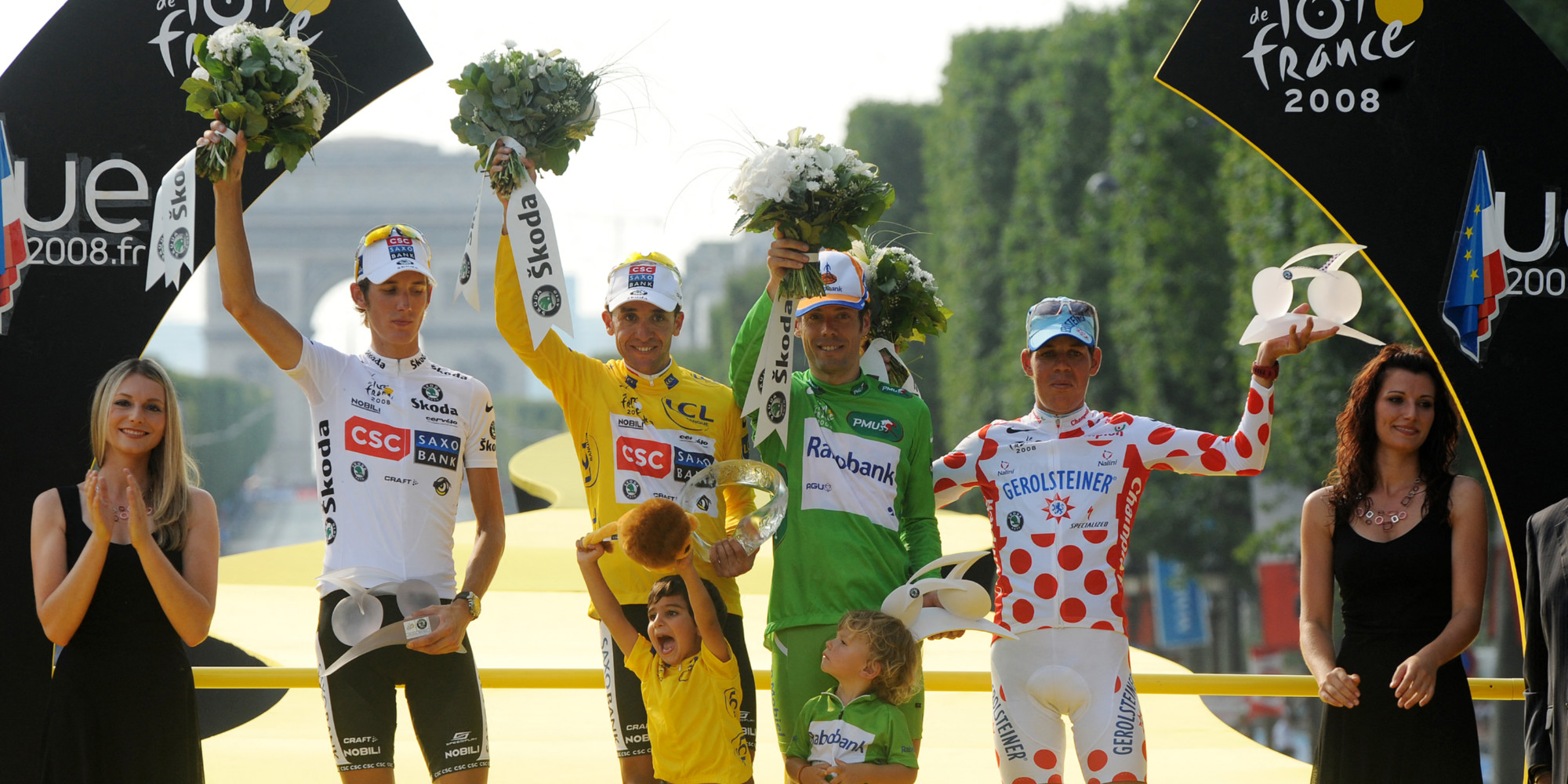Jean-Baptiste Sarrazin / Photo credit: PASCAL PAVANI / AFP
Yellow, green, white or polka dots, the distinctive jerseys of the Tour de France arouse the curiosity of viewers of the Grande Boucle each year. Four jerseys that stand out from cyclists who have distinguished themselves as the race has progressed and whose origins are multiple. Color choices, years of establishment, sponsor influences: here’s everything you need to know about these distinctive jerseys.
The yellow jersey, the color of a newspaper
It is the main jersey of the Tour de France. A true symbol of the Grande Boucle since it is synonymous with the leader of the general classification, the yellow jersey arouses the desire of all the teams involved in the event. But, created in 1903, the Tour de France has not always celebrated its final winner in yellow. It was not until 1919 that the choice of this color was decided, in reference to the color of the pages of the newspaper Carfounder of the Tour de France and ancestor of the daily The Team.
The first wearer of this jersey was a Frenchman in the person of Eugène Christophe. It was on July 19, 1919, in Grenoble and at the start of the 11th stage, that the French cyclist entered the history of the Grande Boucle by donning the very first yellow jersey in the history of the biggest cycling race in the world. world. This leader’s jersey should have been introduced four days earlier, on July 15, during the Marseille-Nice stage, but the tunic had not yet been made.
Polka dot jersey, a tribute to “P’tits pois”
Alongside the yellow jersey, another t-shirt stands out especially during the mountain stages. The polka dot jersey, recognizable by its whitish color adorned with small red dots. Targeted by runners specializing in the ascent of passes, it rewards the best climber of all the stages of the Grande Boucle. Considered the “favorite French” jersey since the exploits of Richard Virenque who won it seven times, it has only existed since 1975.
Previously, the Tour de France organizers awarded “Le Grand Prix de la Montagne”, which also rewarded the best climber in the race. The new design of this jersey, as we know it today, was introduced by the director of the Tour of the 1970s, Henri Desgrande, who decided to pay tribute to Henri Lemoine, a former rider from the 1930s nicknamed “P ‘peas’. The sponsors of this jersey have changed regularly, going from Champion, to Carrefour and then to E.Leclerc since 2019.
Green jersey, the color of a gardening brand
Another t-shirt disputed by the runners specialized in the sprint, the green jersey. Established in 1953 on the occasion of the 50th anniversary of the Tour de France, each year it rewards the leader of the classification by points which are won during the intermediate sprints or at the end of certain stages. This jersey owes its color to its first sponsor, which was À La Belle Jardinière, a brand specializing in the manufacture of “ready-to-wear” clothing for low-income customers. This jersey is thus targeted by explosive and fast runners over short distances like the Slovak Peter Sagan, who has won the green jersey seven times.
White jersey, the best young
The jersey distinguishes the best young rider of the Tour, that is to say the best rider under the age of 25 or less in the general classification. Created in 1975, it was removed for ten years, between 1989 and 1999, before being reintroduced from 2000. Another white tunic existed before this white jersey. The latter rewarded the first in the classification of the combined general classification, mountain classification and classification by points.
But this t-shirt took on another meaning in 1975 with the creation of the “Grand Prix des Jeunes”. A name now replaced by the name “Souvenir Fabio Casartelli”, in tribute to the Italian rider who died during the 1995 Tour de France.
A last jersey, more recent this time, aims to reward the “attackers”. Awarded at the end of each race, it distinguishes the riders who have animated the stage of the day through attacks or breakaways. A combativeness award was created in 1952, but it was not until 1956 that the “super-combative” award was introduced. Eddy Merckx has won this bib four times. Since 1981, no cyclist who has won this award has won the general classification of the Tour de France.
